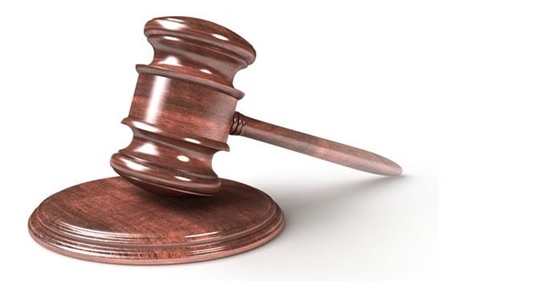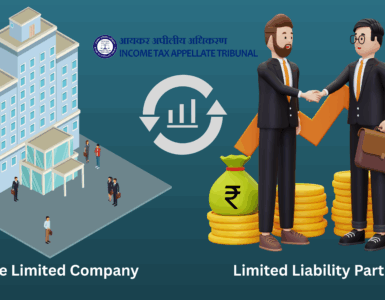| Element | Details |
| Background | Section 45 of the Act, inter alia, provides that capital gains arising from a conversion of capital asset into stock-in-trade shall be chargeable to tax. However, in cases where the stock in trade is converted into, or treated as, capital asset, the existing law does not provide for its taxability or otherwise.
Hence the tax treatment on the same was a matter of controversy: Cost of Acquisition and Period of Holding: One view: · Where stock in trade is converted into capital asset, the holding period for the purposes of classifying it as long-term or short-term capital asset shall be reckoned excluding the period for which it was held as stock-in-trade prior to conversion. · In other words, holding period of asset converted into investment from Stock-in-trade to be reckoned from date of such conversion. Alternate View-in favour of assessee: Commissioner Of Income Tax vs Jannhavi Investments (P) Ltd. on 8 January, 2008. Ques: Whether the assessee was entitled to opt for the fair market value of certain shares as on the statutory date i.e. 1st April 1981, even though the said shares were held as stock-in-trade as on that date? Brief Facts: · The respondents acquired certain shares of M/s Bharat Forge Ltd. in the year 1977. · On the original holding they received bonus shares in the financial year 1981-82 and additional bonus shares in the financial year 1989-90. · All the shares were held as stock-in-trade till 6th Nov., 1987. On the sale of the shares while working out capital gain, assessee computed fair market price as on 1st April, 1981. · The AO held that since the assessee was holding the shares as stock-in-trade upto 2nd Nov., 1987 and as the said shares were not capital assets as on 1st April, 1981, the option adopted as fair market price as on 1st April, 1981 was not available to the assessee Held that the Assessee was entitled to adopt cost of acquisition as on 1st April 1981. Cost of acquisition can only be the cost on the date of the actual acquisition—In the present case there was no acquisition of the shares on 6th Nov., 1987 when the same were converted from stock-in-trade to a capital asset. In other words, date of conversion is irrelevant for the purpose of computing period of holding or cost of acquisition. |
| In order to bring certainty regarding taxation of conversion of an inventory into a capital asset, the FA 2018 introduced a set of provisions under the (Indian Tax Laws) ITL in terms of which the FMV of an inventory, as on the date of conversion into a capital asset, shall be taxed as business income in the year of conversion. |
Proposed Amendments:
|
| Applicability of the amendments | These amendments will apply from AY 2019-20. Therefore, for any conversions on or after 1st April 2018, the FMV of an inventory, as on the date of conversion or treatment of the inventory into a capital asset, is taxed as business income. FMV so determined is considered as the cost of acquisition of the converted capital asset. Such cost is also considered as cost for the purpose of depreciation, if such capital asset is used by a taxpayer in business or profession. |
| Taxing event | Year of Conversion of Inventory into Capital Asset. |
Text of Draft of Notification issued by CBDT on 03.05.2018 is as follows: –
Draft of notification to be issued for amending Income-tax Rules, 1962 for prescribing the manner of determination of fair market value of the inventory for the purpose of 28(via) of the Income-tax Act, 1961.
S.0…….(E). – In exercise of the powers conferred by clause (via) of section 28 read with section 295 of the Income-tax Act, 1961 (43 of 1961), hereinafter referred to as the Income-tax Act, the Central Government hereby makes the following rules further to amend the Income-tax Rules, 1962, namely: ‑
- (1) These rules may be called the Income-tax (….th amendment), Rules, 2018.
(2) They shall come into force from the 1St day of April 2019 and shall apply in relation to assessment years 2019-20 and subsequent years.
- In the Income-tax Rules, 1962, ‑
(A) After rule 11UAA, the following rule shall be inserted, namely:
“Determination of fair market value for inventory
11UAB. (1) For the purposes of clause (via) of section 28 of the Act, the fair market value of the Inventory,
- being an immovable property, being land or building or both, shall be the value adopted or assessed or assessable by any authority of the Central Government or a State Government for the purpose of payment of stamp duty in respect of such immovable property on the date on which the inventory is converted into, or treated, as a capital asset;
- being jewellery, archaeological collections, drawings, paintings, sculptures, any work of art, shares or securities referred to in rule 11UA, shall be the value determined in the manner provided in sub-rule (1) of rule 11 UA and for this purpose the reference to the valuation date in the rule 11U and rule 11UA shall mean the date on which the inventory is converted into, or treated, as a capital asset;
- being the property, other than specified in clause (i) and clause (ii), the price that such property would ordinarily fetch on sale in the open market on the date on which the inventory is converted into, or treated, as a capital asset.”
Example:
Inventory purchased on 1.4.2000 at Rs 100/-
This inventory was converted into Capital Asset on 2.4.2018. The FMV of the inventory determined as per Rule 11 UAB is Rs 300/-. And as per Section 28(via) Rs 200/- will be taxed as business income for AY 2019-20.
| Situations | Treatment |
| Situation 1 | The converted Capital Asset is sold on 31.3.2019
The capital gains will be calculated as follows: Period of Holding as per Section 2(42A(ba): 2.4.2018 to 31.3.2019-Short Term Cost of Acquisition(COA) as per Section 49(9): FMV=Rs 300/- Difference between Sale consideration and COA as per Section 49(9) will be taxed as Short-Term Capital Gains. |
| Situation 2 | If such converted capital asset is utilized for the purpose of business or profession carried on by the taxpayer, then the FMV so determined is treated as an actual cost for the purpose of depreciation. |




